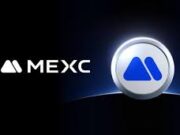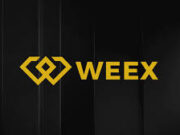Wyoming, long a trailblazer in blockchain innovation, is charging toward a historic milestone: the launch of the Wyoming Stable Token (WYST), the first fiat-backed, fully-reserved stablecoin issued by a U.S. state. As part of this ambitious initiative, the Wyoming Stable Token Commission (WSTC) has entered the public chain bidding stage, a critical step in selecting the blockchain infrastructure to power WYST. With a target launch date of August 20, 2025, this process underscores Wyoming’s commitment to transparency, innovation, and leadership in digital finance. In this blog post, we’ll explore the WYST project, the public chain bidding process, and the rigorous review criteria shaping this groundbreaking endeavor.
The Wyoming Stable Token: A Game-Changer for Digital Finance
Authorized under the Wyoming Stable Token Act of March 2023, WYST is designed to be a U.S. dollar-backed stablecoin, fully reserved with cash, short-term U.S. Treasury securities, and repurchase agreements. Unlike private stablecoins, WYST is a public entity initiative aimed at enhancing financial transparency, reducing transaction costs, and diversifying Wyoming’s revenue streams. Interest from reserve assets will fund public goods like education and infrastructure, aligning with the state’s vision of blockchain as a tool for economic growth.
Wyoming’s crypto-friendly regulatory framework—bolstered by over 45 blockchain-related laws since 2016—positions it as the ideal testing ground for this project. The state’s leadership, led by Governor Mark Gordon, who chairs the WSTC, aims to set a national precedent for state-backed digital currencies, with WYST potentially capturing a market cap of $118.4 million if adopted nationwide.
Entering the Public Chain Bidding Stage
On June 20, 2025, the WSTC announced a shortlist of 11 blockchain finalists to host WYST, marking the official start of the public chain bidding stage. The candidates include prominent layer-1 networks like Solana, Ethereum, Avalanche, Aptos, Sei, Stellar, and Sui, as well as layer-2 solutions such as Polygon, Arbitrum, Base, and Optimism. This diverse lineup reflects Wyoming’s commitment to exploring a multi-chain deployment, with LayerZero’s interoperability protocol ensuring seamless cross-chain functionality.
The bidding process follows a Request for Proposals (RFP) and Request for Qualifications (RFQ) framework, with contracts expected to be awarded by July 17, 2025. The WSTC has introduced rolling qualifications, allowing additional blockchains to be considered if they meet evolving technical requirements. This open approach aims to ensure the best possible platform is selected while fostering competition and innovation.
The Review Process: A Rigorous and Transparent Evaluation
The WSTC’s review process is designed to identify the blockchain(s) best suited to support WYST’s goals of security, scalability, and cost-efficiency. The evaluation criteria, while not fully public, have been partially disclosed through commission updates and industry reports. Key factors include:
- Transaction Speed and Cost: WYST aims to enable near-instant, low-cost transactions (fees under $0.01) for retail, government, and institutional use cases. Solana, for instance, scored top marks for its ability to process up to 65,000 transactions per second with average fees of $0.00025. Aptos also impressed with sub-second finality and high stablecoin volume capacity.
- Smart Contract Support: The ability to execute complex smart contracts is critical for WYST’s functionality, including compliance features like token freezing (if required). Critics have noted inconsistencies in how smart contract capabilities were scored across chains, raising concerns about fairness.
- Security and Stability: Each blockchain undergoes independent auditing to ensure robust security. The WSTC partners with Inca Digital for real-time market surveillance and Chainalysis for compliance monitoring, ensuring WYST’s stability and fraud prevention. Monthly attestation reports will verify reserve assets, enhancing transparency.
- Interoperability: LayerZero’s Omnichain Fungible Token (OFT) standard enables WYST to operate natively across multiple chains without bridging or wrapping, reducing third-party risks. Testnet deployments on Ethereum, Solana, Avalanche, Arbitrum, Optimism, Polygon, and Base have already demonstrated this capability.
- Vendor Compatibility and Operational Performance: The commission evaluates how well each blockchain integrates with WYST’s operational framework, including custody solutions like Fireblocks and compliance tools. Aptos and Solana scored highest in these areas, while Sei emerged as a strong contender with significant user engagement.
The review process has faced scrutiny, notably from Cardano founder Charles Hoskinson, who criticized the WSTC for alleged bias toward Ethereum and Polygon and a lack of transparency. Hoskinson claimed Cardano was excluded without a fair chance to bid, prompting threats of legal action and the formation of the Wyoming Integrity Political Action Committee to advocate for fair procurement. Despite these concerns, the WSTC maintains that its process is open and collaborative, with public smart contract addresses released for community review.
Challenges and Controversies
While the bidding stage is a significant step forward, it hasn’t been without challenges. Community analysts have pointed to inconsistencies in scoring metrics, particularly around finality and transaction costs, which could undermine confidence in the process. The exclusion of blockchains like Cardano, Ripple, and Algorand during closed-door meetings has fueled accusations of favoritism, with some arguing that Wyoming-based firms like Input Output Global (Cardano’s developer) deserved greater consideration.
Additionally, the WSTC is navigating federal regulatory uncertainties. The SEC’s April 2025 guidelines on “covered” stablecoins raised questions about whether WYST qualifies as a security, prompting the commission to refine its compliance framework. Proposed federal legislation, like the GENIUS Act and STABLE Act, may further shape WYST’s rollout, though Wyoming’s status as a state entity likely exempts it from certain federal rules.
What’s Next for WYST?
With the bidding stage underway, the WSTC is focused on finalizing its blockchain selection by mid-July 2025. Testing across multiple testnets is ongoing, with Solana and Aptos leading due to their performance and compatibility with LayerZero. Sei Network remains a strong candidate for secondary deployment, given its user base and technical capabilities. The commission aims to publish a complete operational and compliance framework before the August 20 launch, ensuring WYST meets statutory requirements for over-collateralization and transparency.
If successful, WYST could redefine state-level finance, offering a transparent, low-cost payment rail for global transactions. Its multi-chain approach and government backing position it as a model for other states, with at least eight reportedly monitoring Wyoming’s progress. The project’s success could also accelerate institutional adoption of stablecoins, with market analysts projecting the $245 billion stablecoin market could grow tenfold in three years.
Final Thoughts: Wyoming’s Bold Step Forward
Wyoming’s move to the public chain bidding stage for WYST marks a pivotal moment in its journey to launch the first state-backed stablecoin. By prioritizing transparency, rigorous evaluation, and cutting-edge technology like LayerZero, the WSTC is setting a high standard for digital currency innovation. While challenges like procurement disputes and regulatory hurdles remain, Wyoming’s proactive approach—rooted in its crypto-friendly legacy—positions it to lead the nation in blockchain adoption.
Stay tuned for updates as the WSTC finalizes its blockchain partner and prepares for the August 2025 launch. For developers and enthusiasts, the published smart contract addresses offer a chance to engage with WYST’s testnets. Wyoming is not just issuing a stablecoin—it’s paving the way for a new era of public-sector finance.
Disclaimer: Cryptocurrency investments carry risks. Always conduct thorough research and consult professionals before participating in blockchain-related projects. Verify information through official sources like the Wyoming Stable Token Commission’s transparency portal.
Sources:
- Wyoming Stable Token Commission Updates
- BeInCrypto on WYST Blockchain Finalists
- CoinDesk on Procurement Concerns
- CryptoSlate on WYST Testing and LayerZero
- WyoFile on Wyoming’s Stablecoin Vision
- Coin Push on WYST Launch Timeline
- CoinCentral on Solana and Aptos Selection
- Wyoming Stable Token Commission X Post



























